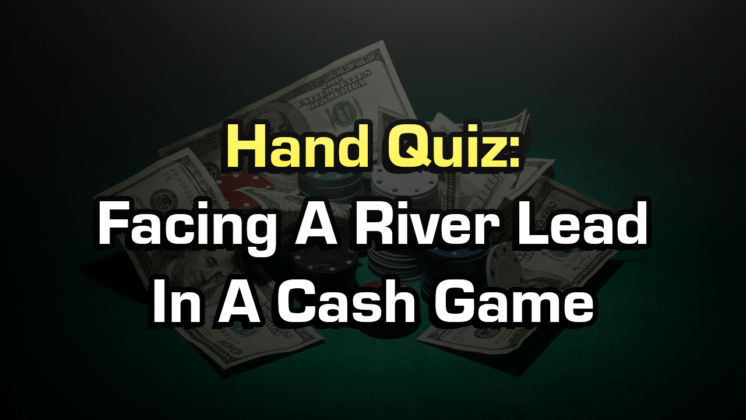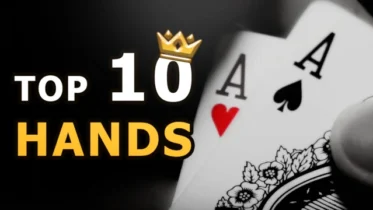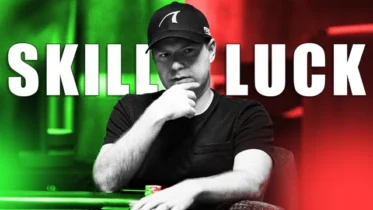Ace-king offsuit can be a very strong hand, but being overly ambitious with it can sometimes lead to you punting your stack. Depending on your stack size in a tournament, sometimes it makes sense to rip it in with ace-king off, but what strategies should you implement when you have the same hand in a cash game?
Scenario: You are seven-handed in a $25-$50 cash game with a stack of $18,400. The UTG player folds and you look down at A♦-K♣ next to act. You make it $150 to go and get called by the hijack, small blind, and big blind. The flop comes A♣-6♦-2♥.
Playing Top Pair On The Flop
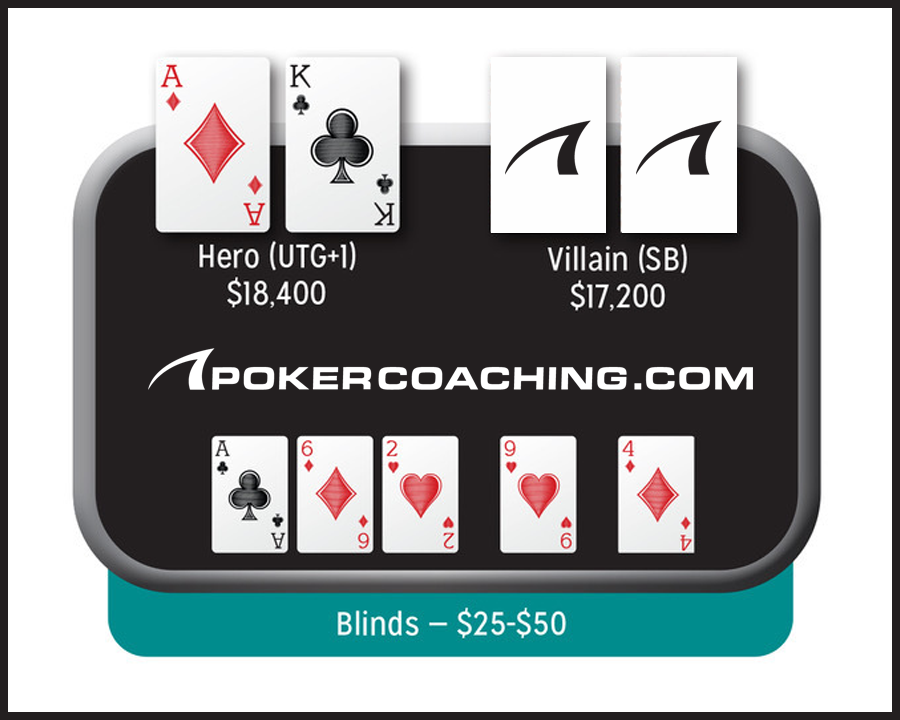
Holding Top Pair-Top Kicker On The Flop
If you pick up a physical tell suggesting that one of your opponents generally likes their hand (meaning they have an ace), you should consider betting on the large side, like $600. However, with no reads, betting $200 or $350 is ideal in order to extract value from the many weaker hands your opponents likely have.
Checking has no merit because it allows the hijack to check behind, resulting in all your opponents seeing a free card that could easily beat you.
Action: You bet $350 and only the small blind calls. The turn is the 9♥.
Top Pair On The Turn In A Cash Game
The Pot: $1,300
The Board: A♣-6♦-2♥-9♥
Effective Stack: 358 Big Blinds Effective
Betting The Turn For Value
While you could be crushed by a better made hand, you should definitely continue betting for value, likely with the intention of folding if your opponent check-raises (unless they are known to use a maniacal strategy.)
By calling your flop bet, your opponent has announced that they have something decent, likely a paired ace, six, or deuce. If they have a pair of sixes or twos, they will likely fold to a large turn bet, making it imperative that you select the right turn bet sizing. A medium bet size is ideal in this spot in order to extract value from the numerous worse made hands in your opponent’s range.
Action: You bet $800 and your opponent calls. The river is the 4♦ and your opponent leads for $1,500 (52% pot).
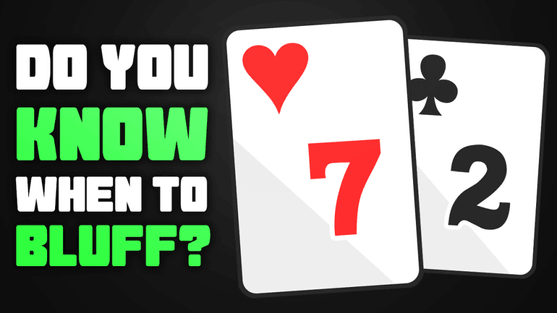
Are your opponents scared of your raises? Take the test that tells you
Facing A River Lead In A Cash Game
The Pot: $4,400
The Board: A♣-6♦-2♥-9♥-4♦
Effective Stack: 342 Big Blinds Effective
Responding To The Lead Bet
If your opponent check-raised the turn, you would likely get out of the way. While this river lead may seem similarly strong, it likely is not. A river bet does demonstrate some strength, but if your opponent is splashy (like the one in this scenario) you should be less concerned because they could certainly be making a blocker bet with a worse made hand trying to “set their price” on the river.
By making a call, you will lose sometimes. But with the excellent pot odds being offered, you only need to win 25% of the time, which will likely be the case with A♦-K♣ except against the most weak, tight, blatantly straightforward opponents.
It’s worth noting, if your opponent checked the river, you should again make a medium-sized value bet.
Result: You call and your opponent reveals A♥-7♠ for top pair, no kicker. While their river lead may have made you nervous, your resolve and patience rewarded you with a nice pot.
